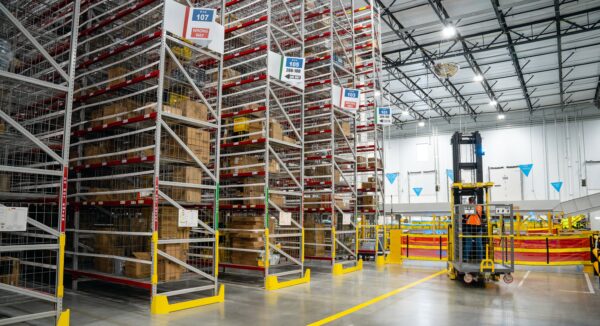Amazon’s ‘Regionalization’ of its U.S. Logistics Network Leads to Reduced Costs, Faster Delivery


Amazon has been overhauling its logistics network to “regionalize” where inventory is located across the U.S. in an effort to reduce delivery costs while maintaining the fast shipping speeds the company is known for, multiple sources report and Amazon has confirmed.
Today, 76% of the products customers order are fulfilled from facilities within their region, Amazon said, and as a result the company said it expects 2023 will be the fastest year yet for customers in terms of delivery speed. This regionalization effort appears to have been underway for some time and has transformed the company’s inventory management processes with Amazon saying that the optimization has led to faster delivery times, reduced costs and decreases in carbon emissions.
Amazon previously operated its fulfillment network on a national level, transporting products across the country as they were ordered, reported the Wall Street Journal. But recently the company divided its logistics network into eight regions designed to operate self-sufficiently, with commonly purchased items placed in multiple locations throughout the country to get them closer to customers. Amazon won’t move products out of the region in which they are located unless it absolutely has to, Amazon’s VP of Transportation Udit Madan told WSJ. In addition to reducing costs and enhancing delivery speed, the changes are also impacting customers’ search results, with items already located close to a customer being shown first.
Another way Amazon is looking to tackle the dual challenge of cutting costs while increasing delivery speed is with a network of smaller, specialized warehouses, called Same-Day Sites, designed for ultrafast fulfillment, the Wall Street Journal previously reported.
The news of Amazon’s ongoing effort to localize its logistics network comes shortly after Amazon reported unexpected gains in Q1 2023, following several quarters of slowing growth that prompted cost-cutting initiatives, including a series of hiring freezes and trim backs in its logistics workforce.
During the pandemic, Amazon went on a hiring spree and nearly doubled its U.S. warehouse space in just two years. Now that the ecommerce boom is slowing though, the company is looking for ways to offset those added costs, and the logistics regionalization effort is one of them. However, it wouldn’t have been possible without the aforementioned warehouse expansion: “This isn’t something we could have easily done in 2019 because we had a much more sparse network,” Madan told WSJ. “The doubling of footprint really allowed us to have a lot more facilities that were closer placed to customers.”
In order to figure out where exactly to place inventory across the country, Stefano Perego, VP of Customer Fulfilment and Global Ops Services for North America and Europe at Amazon told CNBC that the company is using AI to predict what products will be in demand in different parts of the country and place them accordingly.
Since the effort began, Madan told WSJ that Amazon has seen a 15% reduction in the distance items travel from fulfillment centers to customers. Amazon shared separately with Retail TouchPoints that items now have, on average, 12% less touch points before being delivered to a customer.











